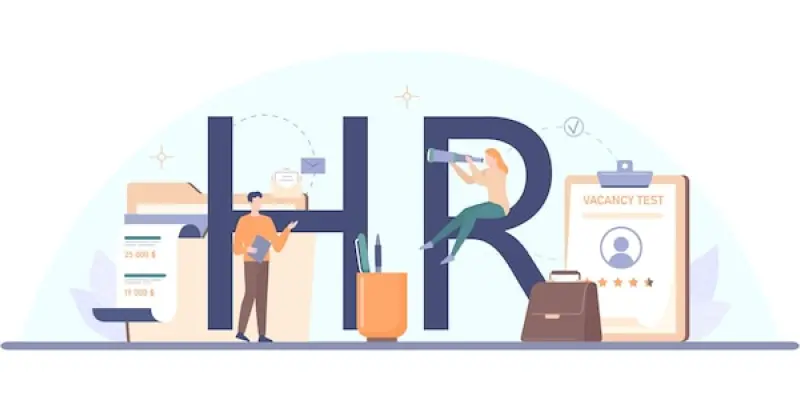In today’s rapidly evolving work environment, the interplay of Learning and Development (L&D) within Human Resources (HR) is becoming increasingly crucial to business strategy and growth. Recent research underscores the strategic importance of integrating L&D into the core objectives of a company, revealing that HR leaders who have embraced this practice saw a 122% greater likelihood of achieving organizational targets. This statistic is derived from a comprehensive study surveying 500 Chief Human Resources Officers (CHROs) and L&D leaders across various sectors. The evidence points to a significant shift—where L&D is no longer viewed merely as a cost center, but rather as a formidable engine for growth and innovation. The evolution of L&D practices reflects a cultural shift within companies, where the development of both technical and soft skills is prioritized alongside technological advancement. Yet, it is the strategic alignment of L&D with business goals that distinguishes high-performing organizations. This transformation signifies a paradigm shift at a critical juncture for HR, as companies grapple with AI integration, workforce transition, and an ever-present skills gap.
The Strategic Integration of L&D
To harness the full potential of L&D in driving business growth, HR leaders must advocate for its integration into core business strategies. Sophisticated HR teams are characterized by their strong connection to senior leadership, which enables them to champion the idea that L&D is instrumental in achieving long-term goals. It is this alignment with top-level management that transforms L&D initiatives from mere administrative tasks into strategic tools that impact organizational performance directly. Through collaboration with senior leadership, HR can navigate the dynamic landscape of workforce needs, continuously adjusting L&D approaches to address emerging challenges. Developing diverse skills, including both technical proficiencies and interpersonal capabilities, stands at the forefront of these strategies. The comprehensive approach ensures that employees are equipped to adapt to new roles and technologies, enhancing competitive advantage. Evidently, organizations that prioritize L&D as a strategic element report improved agility and resilience, which is especially vital in an era marked by constant technological change and economic uncertainties. In practical terms, strategic L&D integration necessitates a nuanced understanding of the organization’s vision and industry trends. HR leaders are called upon to cultivate an agile mindset, using data analytics to inform decision-making processes and to track the impact of L&D on business outcomes. This emphasis on data-driven strategies allows HR departments to tailor L&D interventions specifically to the skill gaps and future needs of the organization, rather than adopting a one-size-fits-all approach. Furthermore, the strategic use of analytics helps in forecasting future trends, enabling proactive planning instead of reactive measures. It positions organizations not just to weather impending shifts but to capitalize on them, transforming potential challenges into opportunities for innovation and leadership. This approach elevates L&D to become a fundamental pillar underpinning organizational strategy, driving not only individual development but also sustainable company growth.
Cultivating a Culture of Learning
A critical component in the successful integration of L&D into business growth strategies is cultivating a robust culture of continuous learning within the organization. This involves fostering an environment where learning is not only encouraged but seamlessly integrated into the daily workflow, shifting perceptions of L&D from optional extras to essential functions. In such cultures, lines between formal training and on-the-job learning blur, allowing employees to enhance their skills organically as they perform their roles. HR leaders play a pivotal role in establishing structures that support lifelong learning, ensuring that professional development is accessible and relevant to all employees. By doing so, organizations not only build a more adaptable workforce but also drive engagement and job satisfaction, contributing to reduced turnover rates and higher productivity. Diverse skill development remains a cornerstone in creating agile organizations prepared for future challenges. While technical skills are undeniably important, today’s business environment demands a balanced amalgamation of hard and soft skills. From emotional intelligence and creativity to problem-solving and leadership, this holistic approach to skill development ensures that employees are well-rounded, adaptable, and ready to assume leadership roles as they arise. This diversification of skills is crucial in preparing teams to manage the complexities of modern business challenges effectively. Additionally, leveraging technology and innovative training methods, such as virtual simulations and collaborative platforms, broadens learning opportunities and makes skill acquisition more efficient and impactful. Consequently, organizations that invest in cultivating a vibrant learning culture not only achieve their strategic objectives but often exceed them, setting the benchmark for industry standards.
The Future of HR and L&D
In the dynamic modern work landscape, the integration of Learning and Development (L&D) within Human Resources (HR) is crucial to fusing with business strategy and spurring growth. Recent studies highlight the pivotal role L&D plays when embedded within a company’s strategic goals. HR leaders adopting this approach experienced a remarkable 122% increased likelihood of hitting organizational targets, as discovered in a survey of 500 Chief Human Resources Officers (CHROs) and L&D leaders across diverse industries. The findings indicate a major shift—L&D now stands as a key driver of growth and innovation rather than merely a cost center. Companies are increasingly prioritizing the development of both technical and soft skills, alongside technological progress. However, what differentiates high-performing companies is aligning L&D with strategic business objectives. This transformation marks a significant evolution at a crucial moment for HR as companies tackle AI integration, workforce transitions, and persistent skills gaps.

